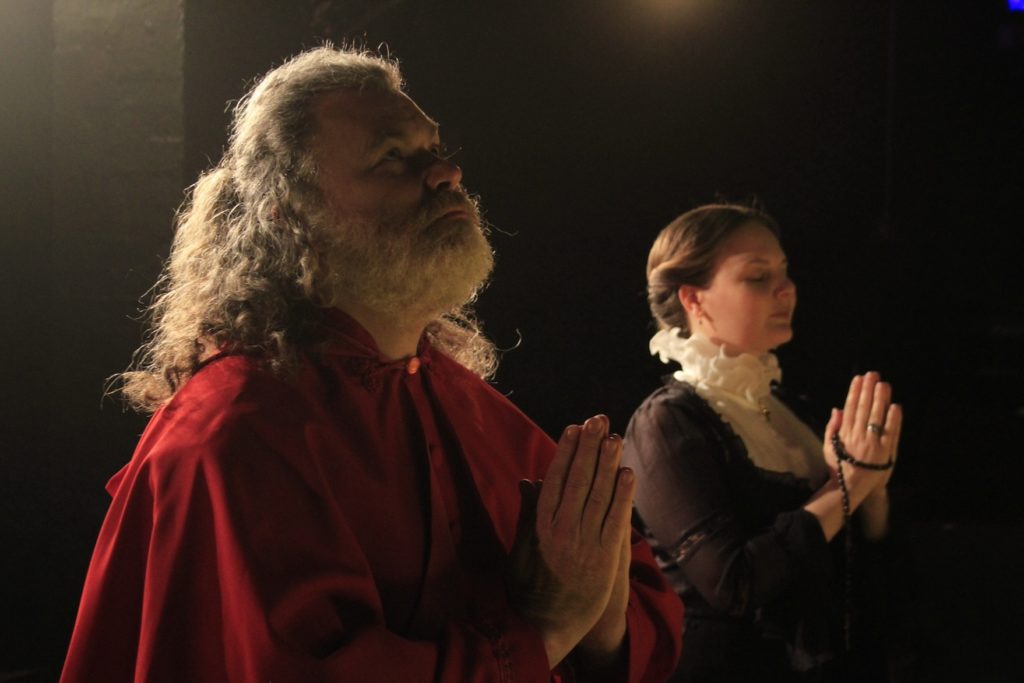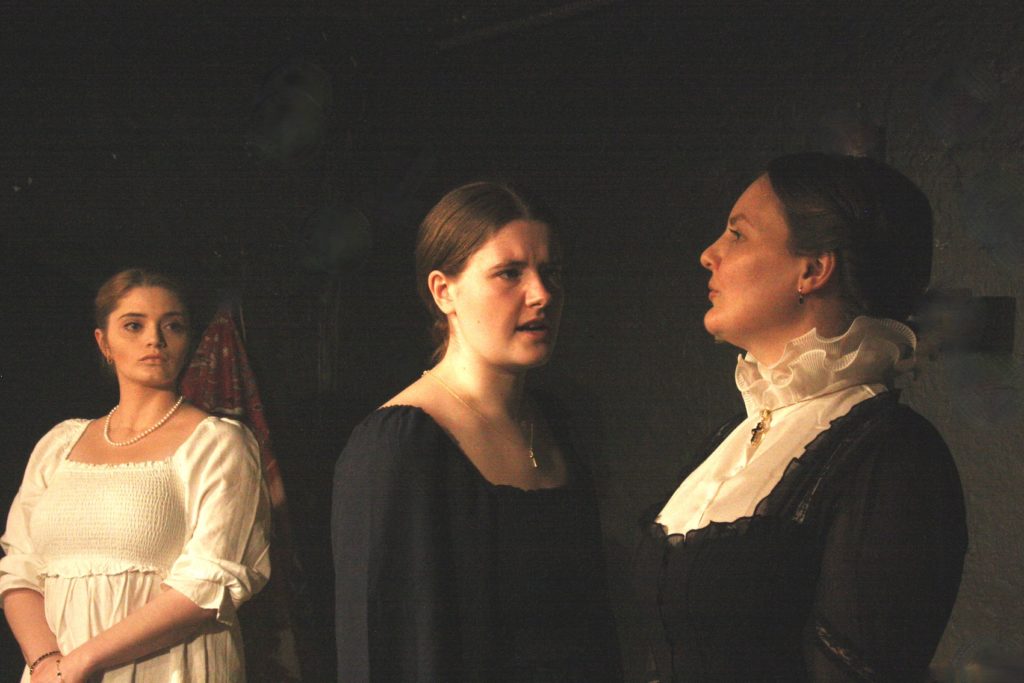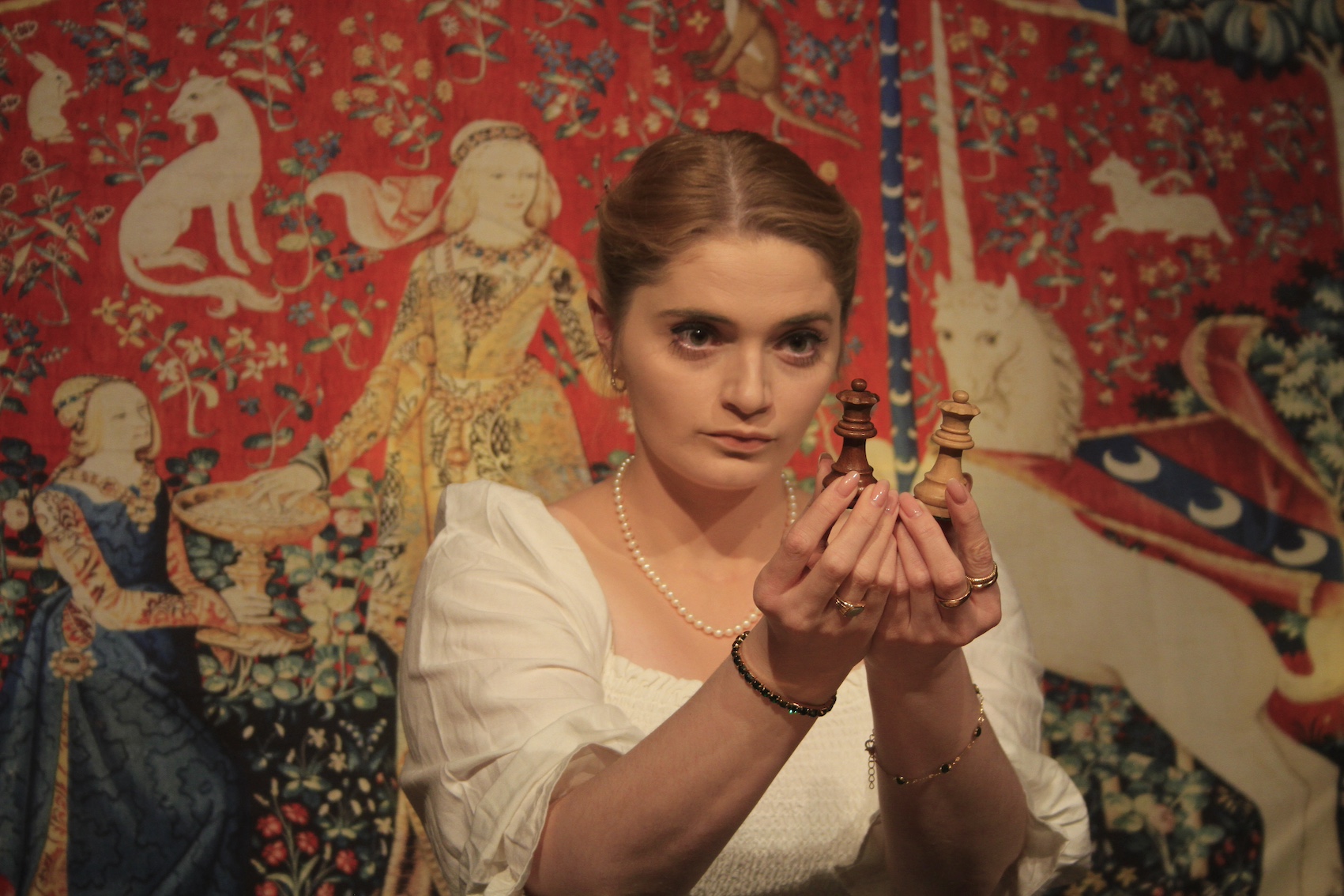Three Queens – Barons Court Theatre, London
Rosamund Gravelle brings to life Tudor intrigues over the course of a dramatic night in Three Queens, now on at Barons Court Theatre.

Three Queens
What goes on behind the closed doors of the royal family? It’s something we speculate about frequently today. But this interest has been around for at least as long as there has been a royal family. Three Queens, a new play by Rosamund Gravelle, takes as its premise one emotionally charged night for the Tudors. It’s the night before Lady Jane Grey’s (Martha Crow) execution. Queen Mary I (Becky Black) and her cousin Cardinal Reginald Pole (Les Kenny-Green) pray for her soul. Princess Elizabeth (Eliza Shea), meanwhile, whiles away the hours playing chess with Sir Robert Dudley (Sushant Shekhar). Can Jane be saved? Will Elizabeth keep her head (literally and figuratively)? Who will prevail in this battle of wills, where freedom, souls and a crown are at stake? It’s not for nothing that a chess motif runs through the play and its marketing.
Gravelle keeps the action in Three Queens at close quarters, dialling up the pressure until the situation reaches an ultimate conclusion. It’s a perfect use of the Barons Court Theatre space, standing in for royal chambers and chapels. The lighting design (Leo Bacica) supports this endeavour wonderfully. It’s atmospheric, feels appropriate for the period, and adds to the tension as dawn breaks and the hours slip away.
In terms of the writing, I found it credible and engaging. It’s undoubtedly difficult when creating a period work and therefore using some formality of language. But Gravelle does manage to create three dimensional characters from the historic figures we’re already familiar with. Black and Shea expand on this in their performances. Shea in particular brings to life the knife’s edge Elizabeth walked in this period, looking ahead to the end of the game in order to plot her next move. Lady Jane Grey is perhaps the hardest character to write and to play. I would have liked to see both writing and performance break beyond the ‘will she/won’t she’ of conversion, but perhaps it is what it is and I’m asking the impossible. Overall the political intrigue and drama is rather fun, even if I did wonder what the takeaway from Three Queens is.

So, What is the Takeaway, Then?
Three Queens is based on extensive research rather than historic fact. That all these people existed is a fact, even if I hadn’t heard of Cardinal Pole or Kat Ashley (Sally Sharp). That Mary I and others pressured Lady Jane Grey to convert to Catholicism and avoid execution: also a fact. But did they all convene in a chapel the night before the execution to scheme and shout and talk theology? That, my friends, is what we call artistic licence.
What Three Queens really seems to consider are the personalities at play. It’s easy to see history long past as a series of almost inevitable events. Three Queens opens back up the possibilities, until the women’s actions and decisions close them down one by one. We are reminded of the impact of personality, faith, sometimes a chance word here and there in sealing a desirable or undesirable outcome. Big things are at stake – the royal succession, religious freedom, political stability – and yet in the end it comes down to people making individual choices. Staying one step ahead in the Tudor court was no mean feat, and I came away from Three Queens with a newfound respect for all three of them.
It’s also a masterclass in creating a simple yet effective small-scale production. I’ve already mentioned the lighting design, which is a real highlight. The costumes likewise are simple, but evoke the period well. The cast under the direction of Sharon Willems make good use of the Barons Court Theatre’s underground space. With the audience up close on three sides, each scene is carefully laid out to ensure it plays well in all directions.
The only thing I was unsure about was the ending. While the majority of the play is straightforward, naturalistic (for the period) dialogue, it’s bookended by more metaphorical, less realistic scenes. Are they dreams? Visions? Could-have-beens? The final scene was the only time I regretted sitting side on, just in case I could have made more sense of it if I were facing the actors.
Nonetheless, Three Queens is well worth a visit to Barons Court Theatre (although it finishes this week so get moving). Make sure you scan the QR code to read the programme: although you can follow without it, the play does assume a level of familiarity with Tudor history that not all will possess. Don’t worry though, if you’re not a history buff yet you may soon be one, swept up in the candlelit intrigue and machinations.
Salterton Arts Review’s rating: 3.5/5
Three Queens on until 11 May 2024. More info and tickets here.
If you see this after your page is loaded completely, leafletJS files are missing.

